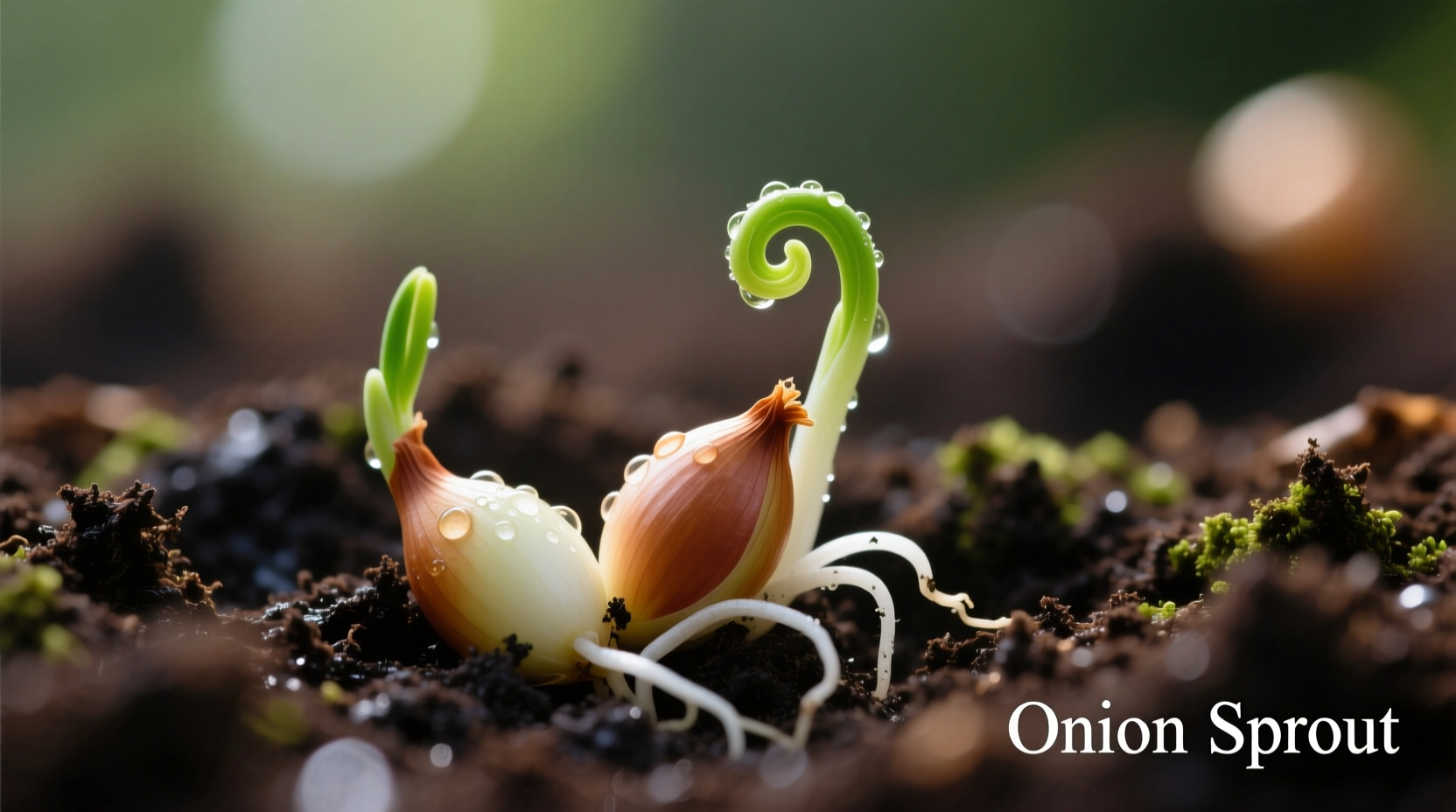Understanding True Onion Seeds: Beyond the Confusion
Many home gardeners and cooks confuse nigella sativa (often labeled as “onion seeds” in Indian markets) with actual Allium cepa seeds. This critical distinction affects both gardening success and culinary results. True onion seeds come from the flowering head of mature onion plants and appear as tiny, jet-black, half-moon shaped specks measuring approximately 2-3mm in length.

The Complete Onion Seed Growing Timeline
Successful onion cultivation from seed requires understanding the precise growth stages. Unlike using onion sets (small pre-grown bulbs), seeds offer more variety options but demand careful timing. The complete journey from seed to harvest follows this predictable pattern:
| Stage | Timeframe | Critical Actions |
|---|---|---|
| Seed starting | 8-10 weeks before last frost | Start indoors at 65-75°F soil temperature |
| Transplanting | When seedlings reach 6 inches | Harden off gradually over 7 days |
| Active growth | 60-90 days after transplant | Maintain consistent moisture, thin to 4-6 inches apart |
| Bulb formation | When daylight reaches 12+ hours | Reduce watering, remove soil from bulb tops |
| Harvest readiness | 120-150 days from seed | When tops fall over naturally |
Practical Onion Seed Selection Guide
Choosing the right onion variety from seed depends on your geographic location and culinary preferences. Day-length requirements determine which varieties will properly form bulbs in your region:
- Short-day varieties (10-12 hours of daylight): Best for southern regions (Texas, Florida). Examples: Texas Super Sweet, Granex. Form bulbs in early spring.
- Intermediate-day varieties (12-14 hours): Suitable for central regions. Examples: Candy, Super Star. More flexible planting windows.
- Long-day varieties (14+ hours): Ideal for northern climates. Examples: Yellow Globe, Red Zeppelin. Require summer solstice conditions to bulb.
Step-by-Step Seed Starting Process
Follow these professional techniques for optimal germination and seedling development:
- Seed selection: Choose fresh seeds (less than 1 year old) as viability drops significantly after 18 months
- Soil preparation: Use sterile seed starting mix with excellent drainage; avoid garden soil
- Sowing depth: Plant seeds 1/4 inch deep, spacing 1 inch apart in rows
- Moisture management: Keep consistently moist but not soggy; use spray bottle to avoid displacement
- Temperature control: Maintain 65-75°F for germination (typically 7-14 days)
- Light requirements: Provide 14 hours of bright light daily once sprouted
- Thinning process: When first true leaves appear, thin to 2 inches apart
Culinary Reality Check: What to Expect
Despite some online confusion, true onion seeds have minimal culinary application compared to nigella sativa. When grown properly, onion seeds develop into the familiar bulb we use in cooking. The seeds themselves lack significant flavor and aren't used as a spice. This distinction matters for both gardeners and cooks:
- Onion seeds contain the genetic blueprint for the entire plant but contribute no distinctive flavor
- Nigella sativa (often mislabeled as onion seeds) offers earthy, peppery notes used in flatbreads and curries
- Onion flowers produce viable seeds but require 2-3 years to develop in most climates
Common Growing Challenges and Solutions
Even experienced gardeners face these frequent onion seed issues. Understanding these context boundaries prevents wasted effort:
- Poor germination: Onion seeds lose viability quickly. Test older seeds by placing 10 on damp paper towel; if fewer than 7 sprout in 7 days, replace.
- Bolting prevention: Exposing young plants to temperatures below 50°F for extended periods triggers premature flowering. Start seeds later in cold climates.
- Thrips management: These tiny insects cause silvery streaks on leaves. Use reflective mulch or insecticidal soap at first sign of damage.
- When to choose seeds over sets: Seeds offer 300+ varieties versus 20-30 with sets, but require 4-6 weeks more growing time. Ideal for gardeners wanting specific heirloom varieties.
Expert Storage Techniques for Future Planting
Preserve seed viability through proper storage using these professional methods:
- Store in airtight container with silica gel packets to maintain 20-30% humidity
- Keep at consistent 32-41°F (refrigerator temperature) away from fruit
- Label with variety and harvest date; most remain viable 1-2 years under ideal conditions
- Test germination rate annually before planting season
When Onion Seeds Outperform Sets
While onion sets offer convenience, seeds provide distinct advantages in specific scenarios:
- Access to rare or heirloom varieties unavailable as sets
- Lower disease transmission risk compared to commercially grown sets
- More uniform bulb size when properly thinned
- Cost efficiency for large plantings (seeds cost about 1/3 per plant)
- Better adaptation to local growing conditions over time











 浙公网安备
33010002000092号
浙公网安备
33010002000092号 浙B2-20120091-4
浙B2-20120091-4